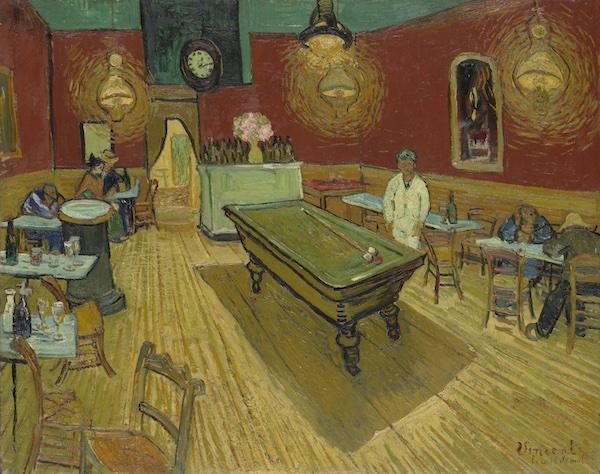
Vincent Van Gogh, Le café de nuit (The Night Café) (1888). Oil on canvas. 28 1/2 × 36 1/4 in. (72.4 × 92.1 cm).
Founded in 1852, the Yale University Art Gallery is the oldest university art museum in the Western Hemisphere. Founded to collect, preserve, study, and present art from all over the world, the gallery is housed in three interconnected buildings that cover one and a half city blocks. Free and open to the public, the gallery’s massive collections span human history and multiple genres. To help navigate this vast treasure trove, here are ten must-see pieces compiled by the curators.
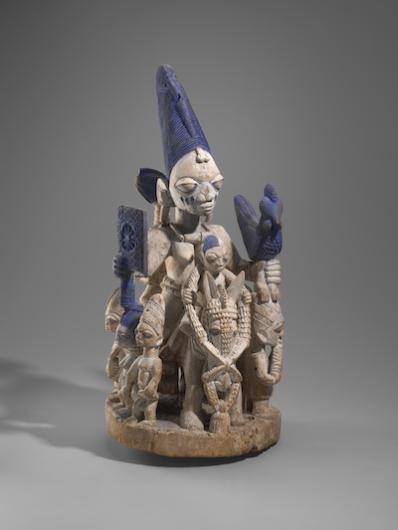
In the African Art collection, this Equestrian Shrine Figure by Moshood Olúṣọmọ Bámigbóyè was part of a shrine for the goddess Oya. A beautifully inscrutable priestess wearing a tall conical blue headdress sits astride a horse, holding a blue royal fan and a blue sacrificial rooster. She is flanked by a trumpeter and soldier, a couple with a drum, and a priest. A royal servant holds the reins.
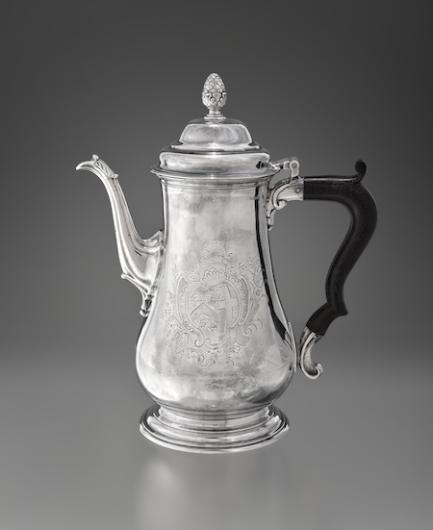
Known for his ardent support of the American Revolution, Paul Revere (1735–1818) was also a master silversmith, as exemplified by this ornate silver coffee pot in the American Decorative Arts collection. Crafted in a fashionable rococo style in 1792 for an elite Boston family, it is engraved with a coat of arms. The artful swirls along its scrolling spout are echoed in the curves of its handle.
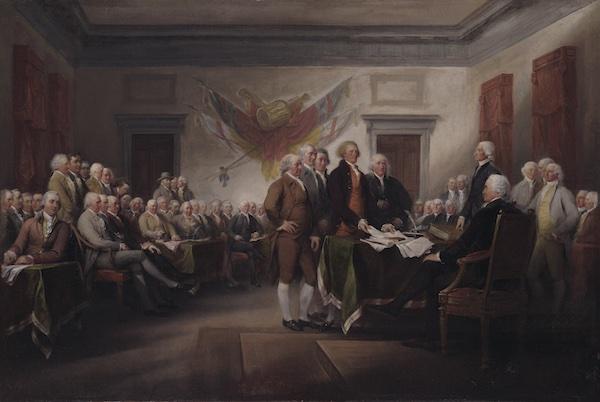
Best known for historic paintings of the American Revolution, John Trumbull (1756–1843) worked on this Declaration of Independence painting, with the assistance of Thomas Jefferson, for over three decades. The painting imagines a room filled with Continental Congress delegates watching as Jefferson’s draft is submitted to John Hancock for consideration.
Trumbull had hoped to depict all fifty-six delegates, but could not obtain the likenesses of them all. While this painting hangs in Yale’s American Paintings and Sculpture collection, another version hangs in the United States Capitol rotunda and is used on the reverse of the current United States two-dollar bill.
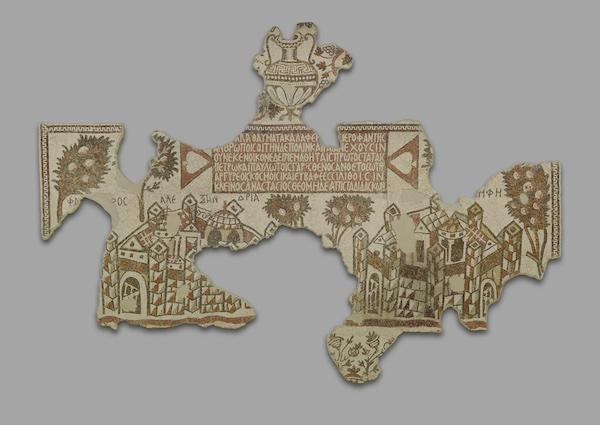
On view in the Ancient Art collection, this Mosaic Floor with Views of Alexandria and Memphis, ca AD 540, depicts the Egyptian cities of Alexandria (left) and Memphis (right), surrounded by tall date palms and verdant vegetation. Depicted in typical Byzantine style, the high, turreted walls and city architecture are shown through a combination of bird’s-eye and perspective views. A central Greek inscription mentions the Church of Saints Peter and Paul, where this mosaic originated.
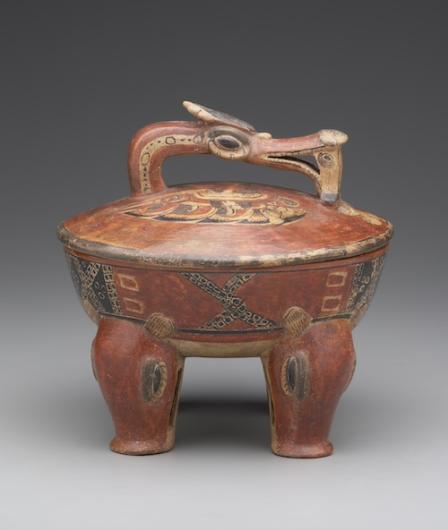
Created by a Maya artist in about 250–400 CE, this Lidded Vessel with Peccaries, Bird, and Fish is in the Art of the Ancient Americas collection. Painted red, with tan and black accents, the vessel’s handle is a bird’s head and neck as it lunges to catch a fish in its mouth; their bodies are painted along the lid’s surface. Patterns of geometric designs cover the vessel’s sides, and its legs are peccary heads, their snouts against the ground.
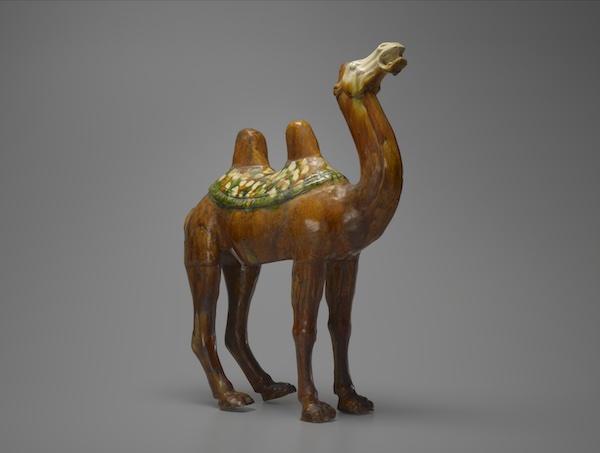
A beautiful example of Tang Dynasty sculpture from the late 7th to early 8th century CE in the Asian Art collection, this reddish-brown Bactrian Camel with a cream colored face stands proudly braying, the green saddle hanging between its humps decorated with multi-colored geometric patterns.
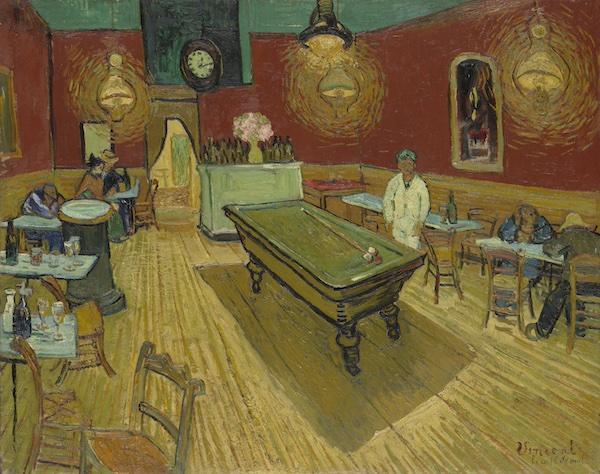
A masterwork in the European Art collection, Night Café by Vincent van Gogh (1853–1890) depicts the Café de l’Alcazar. An all-night café, it was the haunt of derelicts and prostitutes. Van Gogh deliberately chose his garish color palette to reflect the “terrible passions of humanity,” as he explained in a letter to his brother.
Painted with thick brushstrokes, five people sit or slouch at tables grouped along the red walls around a central green billiard table. The owner stands looking at the viewer– reflected gaslight turning his white coat lemon yellow and pale green. Night Café was painted over consecutive nights.
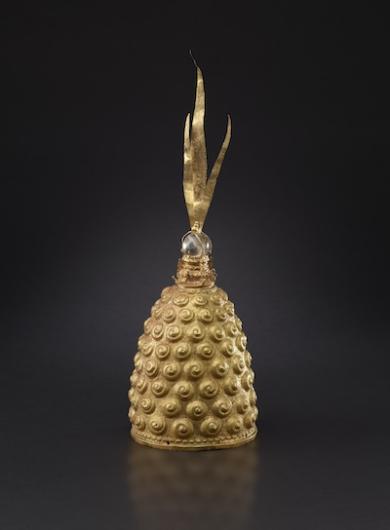
An important Javanese relic in the Indo-Pacific Art collection, this late 9th to early 10th century Crown Top or Usnisha Cover was intended to cover the topknot of a person or statue. A domed golden cone decorated with whorled shell-shapes referencing snails that reputedly crawled onto the Buddha’s head to protect him from the sun, the crown is topped with a crystalline stone bedecked with three golden flame shapes at the top of the crown– representing the Buddha’s “bump of wisdom” (usnisha, in Sanskrit).

A pioneering abstractionist, Moscow-born artist and art theorist Wassily Kandinsky (1866–1944) was an important contributor to the early 20th century avant-garde movement. The Waterfall, in the Modern and Contemporary Art collection, marks his transition from naturalist landscapes to abstractions. Using a bold color palette reminiscent of the Fauvists, Kandinsky has rendered the waterfall and its surrounding flora in bright colors and geometric shapes, creating a fantastically abstract landscape.
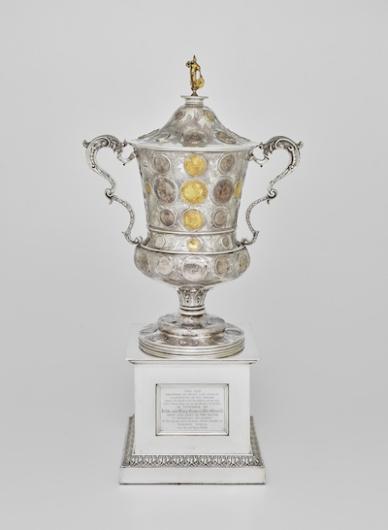
Numismatics is the study or collection of coins, paper currency, and medals. The Gallery’s numismatics, with 120,000 pieces, is the largest such collection at any American university. The Naseby Cup was commissioned in 1839 to commemorate the 1645 Battle of Naseby– an important part of the English Civil War. Reflecting the Victorian obsession with elaborate silverworks, the trophy cup is adorned with seventy-two coins– some of them very rare, counters, and medals from the English Civil War.
Megan D Robinson
Megan D Robinson writes for Art & Object and the Iowa Source.























